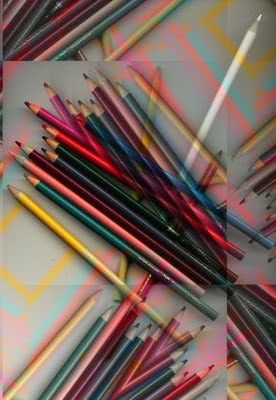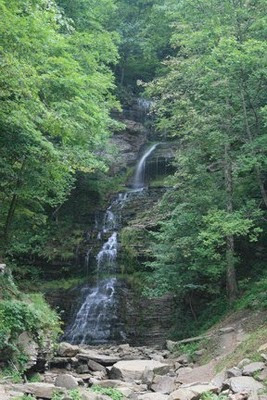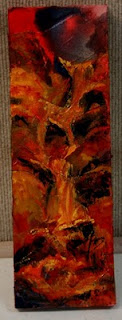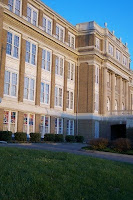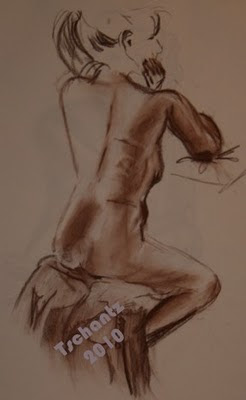 First Saturday
First SaturdayI have been struggling find time and the will to make art myself. Oh, I teach, and do a lot of drawing there, but with trying to promote the gallery and working on the upcoming Miniature Exhibition, I frankly, had not take the time to do art for arts sake. There is always something more pressing to do. The house is dirty, the plants need attention, etc, etc, etc. I had almost talked myself out of it again last Saturday.
Figure drawing started up again last Saturday after the summer hiatus. As usual, I find myself fighting depression and feelings of being a fraud. I almost scared myself into doing something “more important”. This time I made myself go. I needed it.
It was good to get back to basic—real live drawing. First pose lasted a bit more than the scheduled 20 minutes. Gary, one of the other artists in our artist co-op takes charge of timing and lighting. He brings on of his spots from his photography, and kind of oversees the pose.
Thankfully the oppressive hot weather seemed to break by Saturday, so the gallery was comfortable. We still needed the little fan for Lynn, our model, but we were able to turn off our loud, stand alone air conditioner. One of the drawbacks of being in an old, historic building is old pre-central air wiring!
Support and Media
I was really Interested in the different approaches by the artists. Most of us use large sketchpads, spiral bound to keep the pages together, but not all. There were several newsprint pads as well as one artist who brought a box of full size drawing paper sheets. These sheets or pad were put on easels, but one artist brings a more manageable size pad, which gives her the freedom to walk around the room for just the right point of view. Since she works off a pad she can comfortably hold, she is not tied to one spot.
With this variety of formats is a variety of media. While everyone has an array of pencils, other media is also employed. There were charcoal pencils, vine charcoal sticks, pens, pencils, colored pencils, conte’ and water media. One artist routinely “sketches” with watercolor washes.
There are 5 more Saturday s of figure drawing and I hope I can make several. It is my day to “sit” the gallery next Saturday, but I will bring a small pad, and I will be there to help check in work for the Miniature show the weekend of the 22nd, but I hope to make the others. If so, I will post some of my sketches.
The feel of the conte in my hand and not being the one in charge for a change. I could simply draw.
